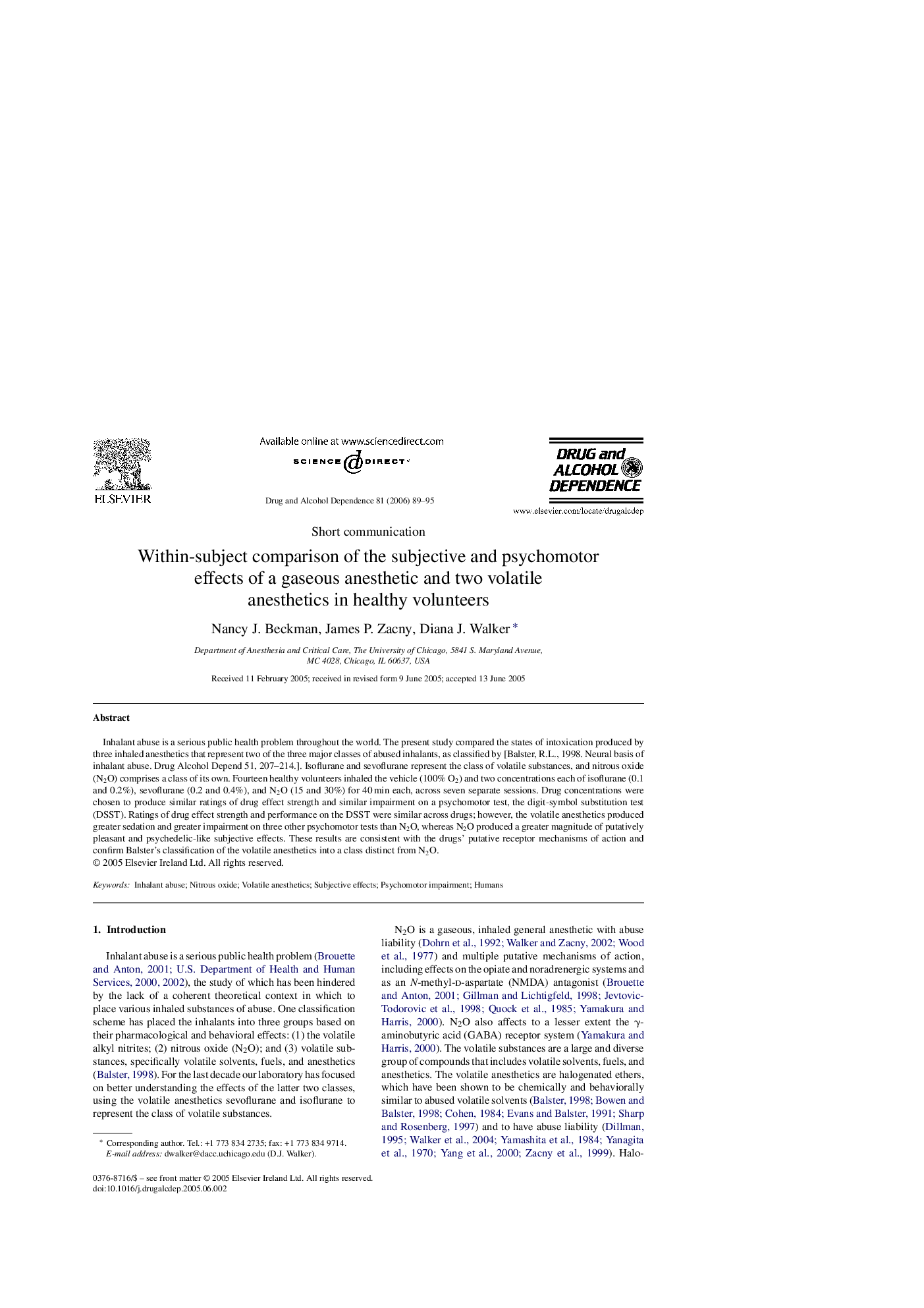| کد مقاله | کد نشریه | سال انتشار | مقاله انگلیسی | نسخه تمام متن |
|---|---|---|---|---|
| 1071921 | 949457 | 2006 | 7 صفحه PDF | دانلود رایگان |

Inhalant abuse is a serious public health problem throughout the world. The present study compared the states of intoxication produced by three inhaled anesthetics that represent two of the three major classes of abused inhalants, as classified by [Balster, R.L., 1998. Neural basis of inhalant abuse. Drug Alcohol Depend 51, 207–214.]. Isoflurane and sevoflurane represent the class of volatile substances, and nitrous oxide (N2O) comprises a class of its own. Fourteen healthy volunteers inhaled the vehicle (100% O2) and two concentrations each of isoflurane (0.1 and 0.2%), sevoflurane (0.2 and 0.4%), and N2O (15 and 30%) for 40 min each, across seven separate sessions. Drug concentrations were chosen to produce similar ratings of drug effect strength and similar impairment on a psychomotor test, the digit-symbol substitution test (DSST). Ratings of drug effect strength and performance on the DSST were similar across drugs; however, the volatile anesthetics produced greater sedation and greater impairment on three other psychomotor tests than N2O, whereas N2O produced a greater magnitude of putatively pleasant and psychedelic-like subjective effects. These results are consistent with the drugs’ putative receptor mechanisms of action and confirm Balster's classification of the volatile anesthetics into a class distinct from N2O.
Journal: Drug and Alcohol Dependence - Volume 81, Issue 1, 4 January 2006, Pages 89–95